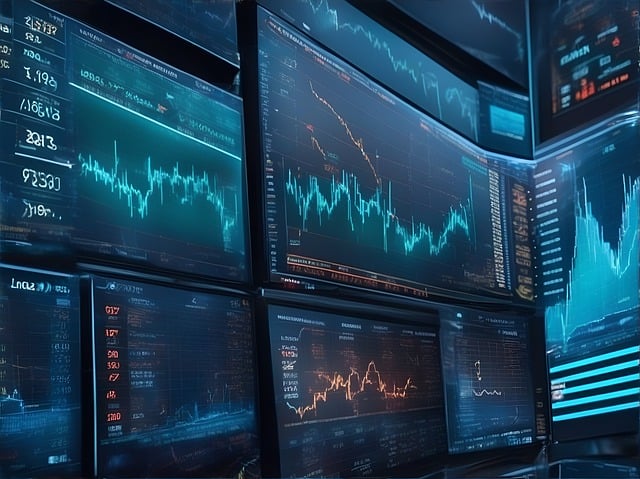The Intricate World of Trade Bots: Navigating the Future of Automated Trading
In recent years, the landscape of trading has undergone a significant transformation with the advent of trade bots—automated systems designed to execute trades on behalf of investors. These sophisticated algorithms offer numerous advantages, yet present unique challenges as well. This article delves into the mechanics, benefits, risks, and future potential of trade bots, coupled with my personal insights to provide a comprehensive understanding of this evolving field.

What Are Trade Bots?
At their core, trade bots are computer programs that utilize algorithms to operate on trading platforms. They can analyze market conditions, execute trades based on predefined parameters, and manage assets without human intervention. The increasing accessibility of technology means that both individual investors and institutional traders utilize these bots for various purposes.
Types of Trade Bots
- Market Making Bots: These bots provide liquidity by buying and selling on both sides of a trade, earning profits from the bid-ask spread.
- Trend Following Bots: These systems analyze past price movements and execute trades based on the assumption that trends will continue.
- Arbitrage Bots: They exploit price discrepancies between different markets or exchanges, executing simultaneous trades to profit from the differences.
- Grid Trading Bots: These bots create a grid of buy and sell orders at set intervals above and below a predetermined price level, capitalizing on normal market volatility.
- News-Based Bots: These systems scan news feeds and social media for sentiment analysis to predict price movements based on news events.
How Do Trade Bots Work?
The functionality of trade bots hinges on their algorithms. Most bots are designed following the principles of technical analysis, which involves studying past market data to make informed trading decisions. Algorithms are programmed to signal potential buy or sell opportunities based on various indicators, such as moving averages, Relative Strength Index (RSI), and other technical indicators.
Programming of Trade Bots
Developing a trade bot typically requires a sound understanding of coding and trading principles. Most bots are created using programming languages like Python or Java, and they often leverage APIs provided by trading platforms to execute trades. This aspect emphasizes an important opinion of mine: while the technology behind trade bots can democratize trading, it also necessitates that traders possess a minimum skill level in both coding and trading strategies to maximize their effectiveness.
Backtesting and Optimization
Before deployment, a critical step in the development of a trade bot is backtesting—where the bot's algorithm is tested against historical market data to evaluate its effectiveness. This is essential for fine-tuning parameters and ensuring that the bot can adapt to varying market conditions. However, the reliance on backtesting can sometimes lead to overfitting, where the bot performs well on past data but fails in real-time trading. Hence, constant monitoring and adjustment are vital.
Benefits of Trade Bots
The rise of trade bots can be attributed to a plethora of benefits they offer:
1. 24/7 Trading
One of the premier advantages of trade bots is their ability to operate 24/7. Unlike human traders, bots do not require rest, allowing them to execute trades at any time, capitalizing on opportunities across different time zones.
2. Emotion-Free Trading
Emotions can often cloud judgment in trading, leading to rash decisions based on fear or greed. Trade bots eliminate this risk, carrying out trades based purely on algorithmic parameters.
3. Speed and Efficiency
Trade bots can process vast amounts of data and execute trades significantly faster than humans. This speed is crucial in a market where prices can fluctuate rapidly.
4. Customization and Flexibility
Traders can customize trade bots to fit numerous strategies, preferences, and risk tolerances, making them highly versatile tools in any investor's arsenal.

Challenges and Risks of Trade Bots
Despite their advantages, trade bots are not without risks and challenges. It is crucial for potential users to consider these factors carefully.
1. Market Risk
While bots can react quickly to market changes, unforeseen events can still lead to losses. Flash crashes and extreme volatility can trigger automated trades that may not align with a trader's overall strategy.
2. Technical Failures
Trade bots are reliant on technology, and any technical glitches—whether due to server issues, internet outages, or bugs in the code—could lead to significant losses. Therefore, round-the-clock monitoring is advisable.
3. Over-Reliance on Automation
One concern I hold is the danger of over-reliance on automated systems. While bots streamline processes, they shouldn't replace human intuition and analysis. Investors need to stay informed about market trends and be prepared to intervene when necessary.
4. Regulatory and Security Concerns
With the increasing popularity of trade bots, regulatory bodies are becoming more interested in how these systems operate. Investors must ensure that they are compliant with regulations related to automated trading and secure against potential cyber threats.
The Future of Trade Bots
As technology continues to evolve, the potential for trade bots appears limitless. With advancements in artificial intelligence and machine learning, future bots may possess enhanced decision-making capabilities, allowing for even more sophisticated trading strategies.
1. AI-Driven Bots
The integration of AI could lead to bots that can learn from past trades and adapt in real-time to changing market conditions. This kind of evolution could reduce the downside risk and improve profitability.
2. Integration with Blockchain Technology
As blockchain technology matures, we might see an influx of decentralized trade bots. These bots could operate on new decentralized exchanges, responding differently to market dynamics compared to current centralized systems.
In conclusion, trade bots offer a blend of opportunities and challenges in the trading arena. Their ability to facilitate and optimize trading activities is clear, but so too are the risks associated with over-reliance on technology. My personal perspective is that the most successful traders will be those who can leverage automated systems while maintaining a keen awareness of market dynamics. This balanced approach may very well define the next generation of investors in the highly competitive trading landscape.